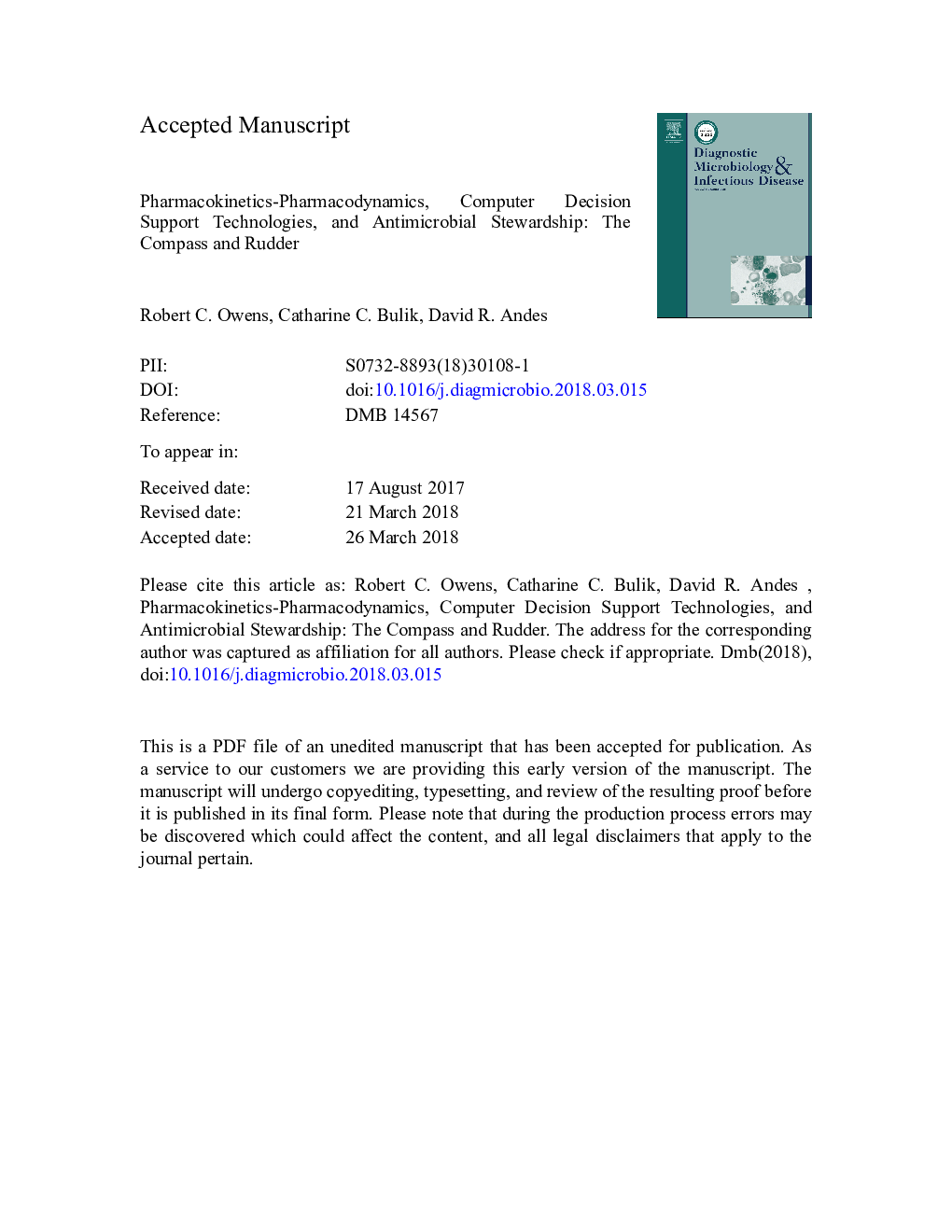| Article ID | Journal | Published Year | Pages | File Type |
|---|---|---|---|---|
| 8737200 | Diagnostic Microbiology and Infectious Disease | 2018 | 41 Pages |
Abstract
The first guidelines for conducting antimicrobial stewardship in the hospitalized setting were published in 2007. These guidelines recommend that stewardship programs employ the science of pharmacokinetics-pharmacodynamics (PK-PD) as well as adopting computerized decision support technologies when possible. The United States Food and Drug Administration have adopted PK-PD as a cornerstone in the evaluation of antimicrobial agents during clinical development. The core principles of PK-PD center around describing the relationship between drug exposure indexed to the susceptibility of the infecting bacterial pathogen and patient response. Using such relationships with population pharmacokinetic models and simulation, rational drug and dosing regimens can be selected. But because PK-PD modeling and simulation programs are generally absent in clinical practice, systematic application of this science is missing. Herein we explain advances in technology that allow clinicians to apply PK-PD to optimize the agents and dosing regimens selected for the treatment of hospitalized patients with infection.
Related Topics
Life Sciences
Immunology and Microbiology
Applied Microbiology and Biotechnology
Authors
Robert C. Jr, Catharine C. Bulik, David R. Andes,
